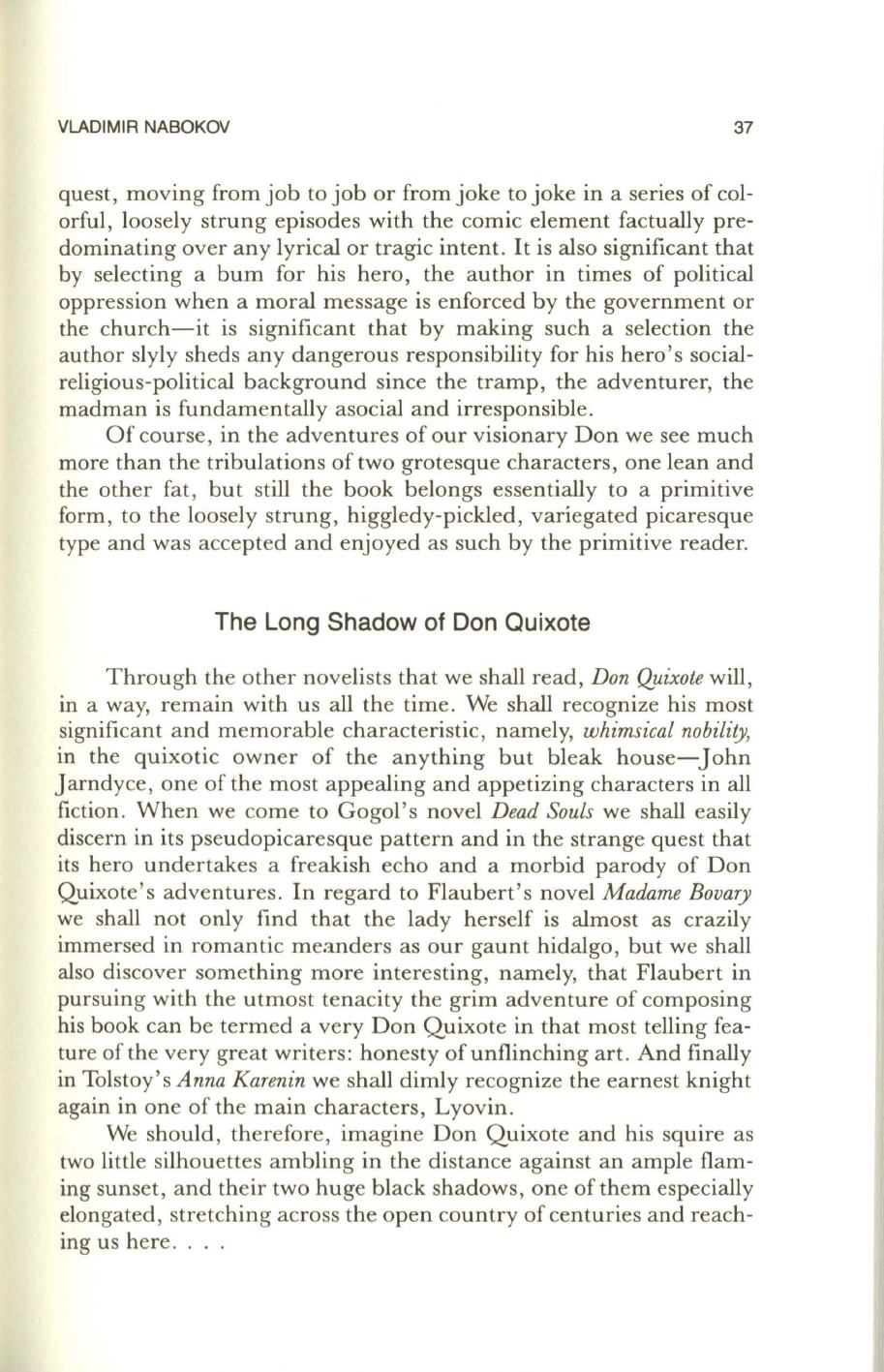
VLADIMIR NABOKOV
37
quest, moving from job to job or from joke to joke in a series of col–
orful, loosely strung episodes with the comic element factually pre–
dominating over any lyrical or tragic intent.
It
is also significant that
by selecting a bum for his hero, the author in times of political
oppression when a moral message is enforced by the government or
the church-it is significant that by making such a selection the
author slyly sheds any dangerous responsibility for his hero's social–
religious-political background since the tramp, the adventurer, the
madman is fundamentally asocial and irresponsible.
Of course, in the adventures of our visionary Don we see much
more than the tribulations of two grotesque characters, one lean and
the other fat , but still the book belongs essentially to a primitive
form, to the loosely strung, higgledy-pickled, variegated picaresque
type and was accepted and enjoyed as such by the primitive reader.
The Long Shadow of Don Quixote
Through the other novelists that we shall read,
Don Quixote
will,
in a way, remain with us all the time. We shall recognize his most
significant and memorable characteristic, namely,
whimsical nobility,
in the quixotic owner of the anything but bleak house-John
J arndyce, one of the most appealing and appetizing characters in all
fiction. When we come to Gogol's novel
Dead Souls
we shall easily
discern in its pseudopicaresque pattern and in the strange quest that
its hero undertakes a freakish echo and a morbid parody of Don
Quixote ' s adventures. In regard to Flaubert's novel
Madame Bovary
we shall not only find that the lady herself is almost as crazily
immersed in romantic meanders as our gaunt hidalgo, but we shall
also discover something more interesting, namely, that Flaubert in
pursuing with the utmost tenacity the grim adventure of composing
his book can be termed a very Don Quixote in that most telling fea–
ture of the very great writers: honesty of unflinching art. And finally
in Tolstoy's
Anna Karenin
we shall dimly recognize the earnest knight
again in one of the main characters, Lyovin.
We should, therefore, imagine Don Quixote and his squire as
two little silhouettes ambling in the distance against an ample flam–
ing sunset, and their two huge black shadows, one of them especially
elongated, stretching across the open country of centuries and reach–
ing us here . . ..


